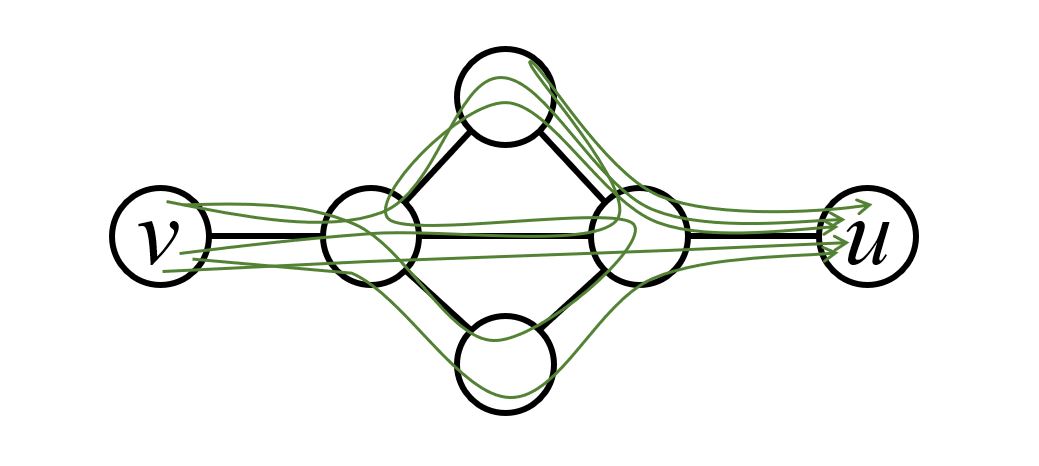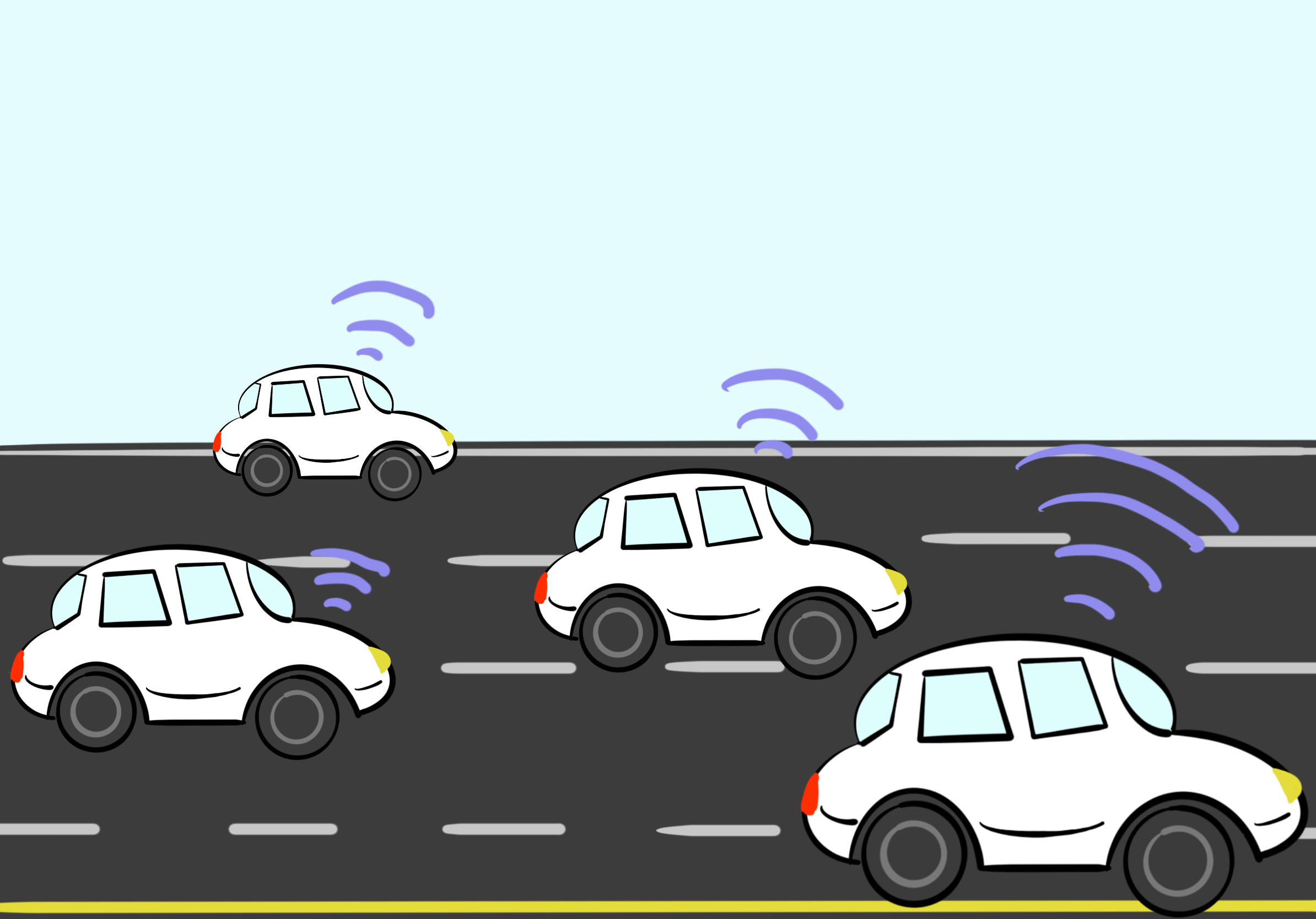1. Background on dynamic networks
Imagine a futuristic scenario with many smart vehicles on the road. Each smart vehicle can directly communicate with near-by vehicles using wireless communication, as long as they are within the radio range of each other. This essentially gives us a computer network with a certain topology. Interestingly, the topology of this network can change over time, as vehicles keep moving in and out of each other's radio range. Such networks are hence called dynamic networks. Because of the continuous topology changes in such dynamic networks, even basic problems (such as counting the number of nodes in the network) become challenging to solve.

